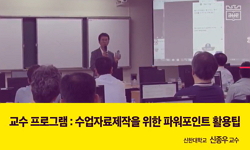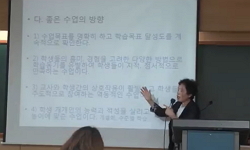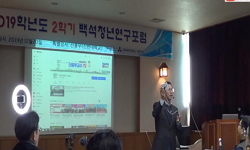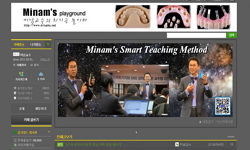In general, traditional theatrical aesthetics is the archetype of 『Poetics』or 『poiētikēs』of Aristoteles (B.C. 384~B.C. 322) in the ancient Greek age. Such aesthetics creates a history, throughout history, going through the aesthetic current ...
http://chineseinput.net/에서 pinyin(병음)방식으로 중국어를 변환할 수 있습니다.
변환된 중국어를 복사하여 사용하시면 됩니다.
- 中文 을 입력하시려면 zhongwen을 입력하시고 space를누르시면됩니다.
- 北京 을 입력하시려면 beijing을 입력하시고 space를 누르시면 됩니다.
이오네스코 ≪수업≫의 인물창조 연구 : '교수' 役을 중심으로 = A Study on Creating Characters of 《La leçon》 Eugéne Ionesco : Focused on the role of 'Professor'
한글로보기https://www.riss.kr/link?id=T15394939
- 저자
-
발행사항
괴산 : 중원대학교 사회문화대학원, 2019
-
학위논문사항
학위논문(석사) -- 중원대학교 사회문화대학원 , 문화예술학과 연극영화 전공 , 2019. 8
-
발행연도
2019
-
작성언어
한국어
- 주제어
-
발행국(도시)
충청북도
-
형태사항
113 ; 26 cm
-
일반주기명
지도교수: 신현주
-
UCI식별코드
I804:43023-200000225561
- 소장기관
-
0
상세조회 -
0
다운로드
부가정보
다국어 초록 (Multilingual Abstract)
However, the two world wars that the mankinds had to experience during the early and mid-the 20th century provided a room for them to have a skeptical view about a belief of scientific technology and rationalism. The advanced scientific technology known as a result of reason that ought to serve for the mankinds drove humans to become destructed during the two world wars. In response to it, the mankinds reflected on themselves who had been self-conceited, therefore, having self-reflection of the essence of human beings. As a result, they came to realize that human beings on this earth were merely creatures that were quite incomplete and irrational, since they were not God. In this context, they could not but admit that the world is not full of ration that can be understood by humans' reason but absurdity.
The theater of the absurd is a newly emerging theatrical play reflecting the epochal background, mainly, Paris, France in the 1950s, after World War II. One of the characteristics of the theatre of the absurd is to describe meaningless existence of humans and the naked life of reality, in an absurd manner, which only shows the absurd lifestyle of the existence of humans, in the absence of psychological interchanges or a detailed plot, dramatizing the lost belief in humans' reason and language representing reason from the negative and critical viewpoints.
Among major authors of the theatre of the absurd are Eugéne Ionesco (1909~1994), Samuel Beckett (1906~1989), Arthur mov (1908~1970), Jean Genet (1910~1986), Harold Pinter (1930~2008) and Edward Albee (1928~2016).
Above all, absurdism is the term coined in the 1960s by Martin Esslin (1918~) in order to leave the outstanding works of theatrical authors of the 1950s as a memento. Ionesco's theatrical play denies the concept of traditional theatrical play consisting of introduction, development, climax and conclusion, and just describes events without causality, at the same time. Thus, the characters appearing in the writer's story are subjects without identity that can neither embody emotional nor psychological interchanges but repeat only words of no meaning. Especially, the characters appearing in the theatre of the absurd of Eugéne Ionesco are characterized as those who feel frustration without cognizing who they are and what life objective they have, and forget their life goal. Such as this, the writer expressed various characteristics of the theatre of the absurd, in a dramatic manner.
In this regard, this study aims to analyze《La leçon, 1951》 of Eugéne Ionesco known as a writer representing the theatre of the absurd, and to explore the approach method about the characters through the process of producing the stage performance that this researcher showed.
This researcher played the role as 'Professor' in 《La leçon, 1951》of Eugéne Ionesco to show the stage performance, creating and embodying the character. To create the character in the process of showing the performance, as a stage actor, this researcher researched the character and work, relying on the existing precedent studies. This researcher also systemized and recorded concretely a lot of real events happening during the process of producing the performance to pursue a more effective and efficient method for creating the character. This researcher means to research with the main focus as follows: firstly by investigating Eugéne Ionesco's life and the characteristics of the work to observe the world view of the work of Eugéne Ionesco. Through 《La leçon, 1951》of Eugéne Ionesco, the concept and effect of theatrical drama, and how absurd language is expressed in the work are to be analyzed; secondly by analyzing the work with the main focus on theatrical play, under the premise of creating characters, and covering the characters concretely based on creating characters; thirdly by analyzing the changing psychological affect of the characters through the analysis of creating characters, finding out visual expression methods with the use of the body, and then investigating the expression of symbol combined with technological stage elements; and lastly, by evaluating about creating characters in 《La leçon, 195》 with the main focus on the performance that this researcher showed, understanding the whole process of creating characters to present problems that must be solved.
It is counseled that this study would provide proper guidance for subsequent researchers to present a model about the method for creating characters by analyzing and exploring the processes and outcomes for an actor to create the character in the theatre of the absurd by really showing the performance.
In general, traditional theatrical aesthetics is the archetype of 『Poetics』or 『poiētikēs』of Aristoteles (B.C. 384~B.C. 322) in the ancient Greek age. Such aesthetics creates a history, throughout history, going through the aesthetic current standing in the opposite side. A major theatrical current and pattern was a realistic theatrical play from the last 19th century until the early 20th century. Realistic theatrical play which lies in reason-centrism is based on scientific technological development and rationalistic idea. Realistic theatrical play has also exerted a tremendous effect up to now.
However, the two world wars that the mankinds had to experience during the early and mid-the 20th century provided a room for them to have a skeptical view about a belief of scientific technology and rationalism. The advanced scientific technology known as a result of reason that ought to serve for the mankinds drove humans to become destructed during the two world wars. In response to it, the mankinds reflected on themselves who had been self-conceited, therefore, having self-reflection of the essence of human beings. As a result, they came to realize that human beings on this earth were merely creatures that were quite incomplete and irrational, since they were not God. In this context, they could not but admit that the world is not full of ration that can be understood by humans' reason but absurdity.
The theater of the absurd is a newly emerging theatrical play reflecting the epochal background, mainly, Paris, France in the 1950s, after World War II. One of the characteristics of the theatre of the absurd is to describe meaningless existence of humans and the naked life of reality, in an absurd manner, which only shows the absurd lifestyle of the existence of humans, in the absence of psychological interchanges or a detailed plot, dramatizing the lost belief in humans' reason and language representing reason from the negative and critical viewpoints.
Among major authors of the theatre of the absurd are Eugéne Ionesco (1909~1994), Samuel Beckett (1906~1989), Arthur mov (1908~1970), Jean Genet (1910~1986), Harold Pinter (1930~2008) and Edward Albee (1928~2016).
Above all, absurdism is the term coined in the 1960s by Martin Esslin (1918~) in order to leave the outstanding works of theatrical authors of the 1950s as a memento. Ionesco's theatrical play denies the concept of traditional theatrical play consisting of introduction, development, climax and conclusion, and just describes events without causality, at the same time. Thus, the characters appearing in the writer's story are subjects without identity that can neither embody emotional nor psychological interchanges but repeat only words of no meaning. Especially, the characters appearing in the theatre of the absurd of Eugéne Ionesco are characterized as those who feel frustration without cognizing who they are and what life objective they have, and forget their life goal. Such as this, the writer expressed various characteristics of the theatre of the absurd, in a dramatic manner.
In this regard, this study aims to analyze《La leçon, 1951》 of Eugéne Ionesco known as a writer representing the theatre of the absurd, and to explore the approach method about the characters through the process of producing the stage performance that this researcher showed.
This researcher played the role as 'Professor' in 《La leçon, 1951》of Eugéne Ionesco to show the stage performance, creating and embodying the character. To create the character in the process of showing the performance, as a stage actor, this researcher researched the character and work, relying on the existing precedent studies. This researcher also systemized and recorded concretely a lot of real events happening during the process of producing the performance to pursue a more effective and efficient method for creating the character. This researcher means to research with the main focus as follows: firstly by investigating Eugéne Ionesco's life and the characteristics of the work to observe the world view of the work of Eugéne Ionesco. Through 《La leçon, 1951》of Eugéne Ionesco, the concept and effect of theatrical drama, and how absurd language is expressed in the work are to be analyzed; secondly by analyzing the work with the main focus on theatrical play, under the premise of creating characters, and covering the characters concretely based on creating characters; thirdly by analyzing the changing psychological affect of the characters through the analysis of creating characters, finding out visual expression methods with the use of the body, and then investigating the expression of symbol combined with technological stage elements; and lastly, by evaluating about creating characters in 《La leçon, 195》 with the main focus on the performance that this researcher showed, understanding the whole process of creating characters to present problems that must be solved.
It is counseled that this study would provide proper guidance for subsequent researchers to present a model about the method for creating characters by analyzing and exploring the processes and outcomes for an actor to create the character in the theatre of the absurd by really showing the performance.
국문 초록 (Abstract)
그러나 20세기 초중반에 인류가 경험해야 했던 양차 세계대전은 과학기술과 합리주의에 대한 믿음에 회의를 가지게 하기에 충분하였다. 인류를 위해 기여해야 할 인간 이성의 결정체인 첨단과학기술은 양차 세계대전 동안 인류를 파멸에 몰아넣고 말았던 것이다. 이에 인류는 그간 자만심에 빠졌던 스스로를 반성하게 되고, 과연 우리 인간은 어떠한 존재인가에 대해 성찰을 하게 되었다. 그 결과 신이 아닌 인간은 세상에 존재하는 일개 피조물에 지나지 않으며 아주 부족하고 불합리한 개체라는 사실을 깨닫게 된다. 그리고 세상은 인간 이성으로 파악할 수 있는 합리적인 것이 아니라 부조리로 가득 차 있다는 사실을 인정할 수밖에 없게 된다.
부조리극은 이러한 시대적 배경 속에서 제2차 세계대전이 끝난 후 1950년대 프랑스 파리를 중심으로 새로이 출현한 연극이다. 부조리극의 특성은 인간 존재의 무의미함과 적나라한 현실의 삶을 부조리하게 그리고 있는데, 심리적 교류나 이야기의 진전은 없고 그저 인간 존재의 부조리한 모습만을 보여줌으로써 인간의 이성에 대한 믿음이 무너져버리고 그 이성을 대표하는 언어에 대한 부분을 부정적이고 비판적이게 극으로 표현하고 있다.
부조리극의 대표 작가로는 외젠 이오네스코(Eugéne Ionesco, 1909~1994), 사무엘 베케트(Samuel Beckett, 1906~1989), 아르튀르 아다모프(Arthur Adamov, 1908~1970), 장 주네(Jean Genet, 1910~1986), 해럴드 핀터(Harold Pinter, 1930~2008), 에드워드 올비(Edward Albee, 1928~2016) 등이 있다.
부조리주의(Absurdism)는 마틴 에슬린(Martin Esslin, 1918~)이 1950년대에 두각을 나타내었던 극작가들의 작품을 기리기 위해 1960년경에 만든 용어이며, 그중에서도 이오네스코의 연극은 전통연극의 개념을 거부하는 동시에, 극 행위가 발단, 전개, 절정, 결말로 이루어지는 전통 연극과는 달리 원인과 결과에 연속성이 없고 그저 여러 사건들로 나열될 뿐이다. 그렇기에 그의 등장인물들도 감정의 교류나 심리를 구현할 수 없고 무의미한 말만 되풀이하는 정체성 없는 존재들이다. 특히, 이오네스코의 부조리극에 나타난 등장인물들의 특성은 자신이 깨닫지 못하는 것, 나는 누구이고 삶의 목적이 무엇인지 모르는 방황하는 인간, 인생의 목적을 망각한 인간을 나타내고 있어 부조리극에 나타난 다양한 특성들을 연극적으로 표현하고 있다.
본 논문에서는 이러한 부조리극의 대표적인 작가인 이오네스코의《수업》(La leçon, 1951)을 분석하고, 공연제작에 배우로서 참여하여 인물에 접근한 방식을 연구하고자 한다.
본 연구자는 이오네스코의《수업》에서 ‘교수’역을 맡아 인물 창조를 하여 형상화하였으며, 무대 위에서 실연하였다. 공연의 과정에 있어 배우로서 인물 창조를 위해 기존의 선행 연구들을 참고하며 인물과 작품에 관해 연구하였다. 또한, 공연이 제작되는 과정 중 이루어지는 실제적인 여러 가지 경우들을 체계화시키고, 구체적으로 기록하면서 인물 창조에 더 효과적이고 효율적인 방법을 모색하였다. 본 논문에서 연구자가 중점적으로 연구하고자 하는 내용은 다음과 같다.
첫째, 이오네스코의 작품세계관을 알아보기 위해 그의 생애 및 작품의 특징을 살펴보고자 한다. 이오네스코의《수업》을 통해 희극적 드라마의 개념 및 효과, 부조리한 언어가 어떻게 작품 속에서 표현되었는지 분석해보고자 한다.
둘째, 인물 창조를 위한 전제로, 희곡을 중심으로 작품분석을 하고 인물 분석과 인물 구축을 구체적으로 분석하여 인물 창조에 기초를 다진다.
셋째, 인물 창조에 대한 분석을 통해 인물의 심리적 정서의 변화를 분석하고 신체를 활용해 시각적으로 표현한 방법을 알아본 후 무대 기술적인 요소와의 접목으로 상징성을 어떻게 나타냈는지 살펴보고자 한다.
넷째, 실연한 공연을 중심으로《수업》에서의 인물 창조에 대해 평가를 하고, 인물 창조의 전체적인 과정을 정리함으로써 문제점 및 보완 방안을 제시하고자 한다.
본 논문에서는 실제 공연을 통해 부조리극에서 배우가 인물을 창조하기 위한 과정과 결과를 분석하고 연구함으로써 이것들이 후학들에게 부조리극의 인물 창조 방법에 대하여 모형을 제시하고 도움이 되기를 소망한다.
일반적으로 연극에 있어서 전통미학은 고대 그리스 아리스토텔레스(Aristoteles, B.C. 384~B.C. 322)의 『시학』(Poetics, 詩學, poiētikēs)을 전형(典型)으로 한다. 그리고 그 전통미학은 그 반대편에 위...
일반적으로 연극에 있어서 전통미학은 고대 그리스 아리스토텔레스(Aristoteles, B.C. 384~B.C. 322)의 『시학』(Poetics, 詩學, poiētikēs)을 전형(典型)으로 한다. 그리고 그 전통미학은 그 반대편에 위치한 미학적 흐름과 함께 시대를 바꾸어가며 역사를 이룬다. 19세기 말에서 20세기 초에 이르기까지의 주요한 연극적 흐름이자 양식은 사실주의 연극이었다. 사실주의 연극은 이성중심주의에 기초하고 있기에 과학기술의 발달과 합리주의 사상이 바탕을 이루고 있다. 그리고 사실주의 연극은 오늘날까지도 큰 영향력을 행사하고 있다.
그러나 20세기 초중반에 인류가 경험해야 했던 양차 세계대전은 과학기술과 합리주의에 대한 믿음에 회의를 가지게 하기에 충분하였다. 인류를 위해 기여해야 할 인간 이성의 결정체인 첨단과학기술은 양차 세계대전 동안 인류를 파멸에 몰아넣고 말았던 것이다. 이에 인류는 그간 자만심에 빠졌던 스스로를 반성하게 되고, 과연 우리 인간은 어떠한 존재인가에 대해 성찰을 하게 되었다. 그 결과 신이 아닌 인간은 세상에 존재하는 일개 피조물에 지나지 않으며 아주 부족하고 불합리한 개체라는 사실을 깨닫게 된다. 그리고 세상은 인간 이성으로 파악할 수 있는 합리적인 것이 아니라 부조리로 가득 차 있다는 사실을 인정할 수밖에 없게 된다.
부조리극은 이러한 시대적 배경 속에서 제2차 세계대전이 끝난 후 1950년대 프랑스 파리를 중심으로 새로이 출현한 연극이다. 부조리극의 특성은 인간 존재의 무의미함과 적나라한 현실의 삶을 부조리하게 그리고 있는데, 심리적 교류나 이야기의 진전은 없고 그저 인간 존재의 부조리한 모습만을 보여줌으로써 인간의 이성에 대한 믿음이 무너져버리고 그 이성을 대표하는 언어에 대한 부분을 부정적이고 비판적이게 극으로 표현하고 있다.
부조리극의 대표 작가로는 외젠 이오네스코(Eugéne Ionesco, 1909~1994), 사무엘 베케트(Samuel Beckett, 1906~1989), 아르튀르 아다모프(Arthur Adamov, 1908~1970), 장 주네(Jean Genet, 1910~1986), 해럴드 핀터(Harold Pinter, 1930~2008), 에드워드 올비(Edward Albee, 1928~2016) 등이 있다.
부조리주의(Absurdism)는 마틴 에슬린(Martin Esslin, 1918~)이 1950년대에 두각을 나타내었던 극작가들의 작품을 기리기 위해 1960년경에 만든 용어이며, 그중에서도 이오네스코의 연극은 전통연극의 개념을 거부하는 동시에, 극 행위가 발단, 전개, 절정, 결말로 이루어지는 전통 연극과는 달리 원인과 결과에 연속성이 없고 그저 여러 사건들로 나열될 뿐이다. 그렇기에 그의 등장인물들도 감정의 교류나 심리를 구현할 수 없고 무의미한 말만 되풀이하는 정체성 없는 존재들이다. 특히, 이오네스코의 부조리극에 나타난 등장인물들의 특성은 자신이 깨닫지 못하는 것, 나는 누구이고 삶의 목적이 무엇인지 모르는 방황하는 인간, 인생의 목적을 망각한 인간을 나타내고 있어 부조리극에 나타난 다양한 특성들을 연극적으로 표현하고 있다.
본 논문에서는 이러한 부조리극의 대표적인 작가인 이오네스코의《수업》(La leçon, 1951)을 분석하고, 공연제작에 배우로서 참여하여 인물에 접근한 방식을 연구하고자 한다.
본 연구자는 이오네스코의《수업》에서 ‘교수’역을 맡아 인물 창조를 하여 형상화하였으며, 무대 위에서 실연하였다. 공연의 과정에 있어 배우로서 인물 창조를 위해 기존의 선행 연구들을 참고하며 인물과 작품에 관해 연구하였다. 또한, 공연이 제작되는 과정 중 이루어지는 실제적인 여러 가지 경우들을 체계화시키고, 구체적으로 기록하면서 인물 창조에 더 효과적이고 효율적인 방법을 모색하였다. 본 논문에서 연구자가 중점적으로 연구하고자 하는 내용은 다음과 같다.
첫째, 이오네스코의 작품세계관을 알아보기 위해 그의 생애 및 작품의 특징을 살펴보고자 한다. 이오네스코의《수업》을 통해 희극적 드라마의 개념 및 효과, 부조리한 언어가 어떻게 작품 속에서 표현되었는지 분석해보고자 한다.
둘째, 인물 창조를 위한 전제로, 희곡을 중심으로 작품분석을 하고 인물 분석과 인물 구축을 구체적으로 분석하여 인물 창조에 기초를 다진다.
셋째, 인물 창조에 대한 분석을 통해 인물의 심리적 정서의 변화를 분석하고 신체를 활용해 시각적으로 표현한 방법을 알아본 후 무대 기술적인 요소와의 접목으로 상징성을 어떻게 나타냈는지 살펴보고자 한다.
넷째, 실연한 공연을 중심으로《수업》에서의 인물 창조에 대해 평가를 하고, 인물 창조의 전체적인 과정을 정리함으로써 문제점 및 보완 방안을 제시하고자 한다.
본 논문에서는 실제 공연을 통해 부조리극에서 배우가 인물을 창조하기 위한 과정과 결과를 분석하고 연구함으로써 이것들이 후학들에게 부조리극의 인물 창조 방법에 대하여 모형을 제시하고 도움이 되기를 소망한다.
목차 (Table of Contents)
- 국문요지 ⅰ
- Ⅰ. 서론 1
- 1. 연구의 목적 1
- 2. 연구의 범위 및 방법 3
- 국문요지 ⅰ
- Ⅰ. 서론 1
- 1. 연구의 목적 1
- 2. 연구의 범위 및 방법 3
- Ⅱ. 이오네스코의 작품 세계관 5
- 1. 이오네스코의 생애 및 작품 특징 5
- 가. 이오네스코의 생애 및 작품 활동 5
- 나. 이오네스코의 작품 특징 11
- 2. 이오네스코《수업》의 구조적 특징 19
- 가. 희극적 드라마 19
- 나. 부조리한 언어의 사용 23
- Ⅲ. 인물창조의 전제 30
- 1. 희곡분석 30
- 가.《수업》의 작품분석 30
- 나.《수업》의 장면분석 38
- 2. 인물분석 44
- 가. 인물의 목표 45
- 나. 인물의 장면목표 49
- 3. 인물구축 51
- 가. 상상을 통한 인물의 내면세계 51
- 나. 인물의 외적 조건 표현 58
- Ⅳ. 인물의 형상화 62
- 1. 심리적 정서의 변화 62
- 가. 반복을 통한 인물의 정서 극대화 62
- 나. 관계를 통한 심리적 긴장 강화 66
- 2. 신체를 활용한 시각적 표현 양식 73
- 가. 연극적 기호로서의 신체적 형상화 73
- 나. 신체를 활용한 오브제의 활용 79
- 3. 무대 기술적 요소와의 접목을 통한 상징성 강화 83
- 가. 무대 83
- 나. 조명 88
- Ⅴ. 결론 93
- 참고문헌 95
- Abstract 99
- 부 록 103












